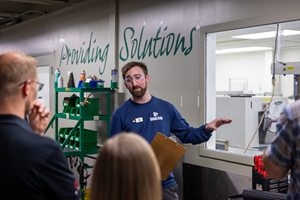Appliances to Grow (Finally) in 2013
Wood on Plastics
Two factors will prompt growth in appliance demand this year. First is the continuing recovery in the residential construction and real estate markets. The other factor that will prop up demand for appliances in 2013 is the fact that the durable goods in American homes are aging.
In the first quarter of this year U.S. industrial production of household appliances increased by 6% compared with the fourth quarter of 2012, and by 7% vs. the same quarter a year ago. As anyone who has followed the U.S. appliance industry knows, this sector has had very few reasons to celebrate in recent years. So the strong start to this year is certainly noteworthy.
U.S. output of household appliances last registered a cyclical peak in 2004, and the industry has been declining ever since, contracting by 33%. I expect this downward streak to end in 2013. The bad news is that the annual increase this year will be moderate at best. The latest forecast calls for a gain of 5% to 6% in U.S. output of household appliances vs. 2012. This industry still has a long way to go before it gets back to pre-recession levels, but at least it will stop going downward.
Two factors will prompt growth in appliance demand this year. First is the continuing recovery in the residential construction and real estate markets. The trend in sales of household appliances correlates closely with trends in these two sectors. Appliance demand took a nosedive right after the housing bubble burst in 2008, and it continued to drift downward to historically low levels in the next three years. The long-awaited recovery in the housing market started to gain momentum last year, and this trend should continue for several years to come. This will spur demand for new household appliances for the next few years.
The other factor that will prop up demand for appliances in 2013 is the fact that the durable goods in American homes are aging. After the last recession, consumers were reticent to purchase big-ticket items. They chose to avoid debt and instead pay off their credit cards. But things are now starting to wear out and need to be replaced. This replacement demand started to show up in automotive over a year ago, and it will now start to positively affect the appliance industry.
Keen observers of the appliance industry will note that the conditions just described will generate rising demand for appliances, but that does not necessarily mean that the appliances will be produced domestically. A close look at the accompanying chart reveals that domestic appliance output was gradually drifting lower during the three years prior to the Great Recession.
Housing starts hit their cyclical peak in 2006, more than two years after the cyclical peak in U.S. appliance production. So this industry was clearly under stress from foreign competition long before it was hit by the disastrous bust in the housing sector.
The problems caused by imports will persist for the foreseeable future, but the advantages that foreign manufacturers once enjoyed are diminishing. The ever-rising costs for shipping, combined with rapid changes in both technology and consumer tastes, put a premium on manufacturing close to the market.
These factors can be overlooked for a brief period, but they cannot be ignored forever. Despite all of the hoopla pertaining to the dynamic growth in emerging economies, America is still one of the world’s most robust markets for household appliances. Those domestic OEMs and their suppliers who are innovative are still likely to find a way to make a profit in this marketplace.
WHAT THIS MEANS TO YOU
•Consumers want appliances that are quiet, energy efficient, fun to use, and beautiful. OEMs will design with those objectives in mind.
•“Smart” appliances, those that can be programmed and controlled remotely, will also be popular.
•Manufacturers and consumers will be increasingly aware of the problems emanating from the disposal of old appliances. Designs that enhance recyclability will gain attention
Related Content
Impacts of Auto’s Switch to Sustainability
Of all the trends you can see at NPE2024, this one is BIG. Not only is the auto industry transitioning to electrification but there are concerted efforts to modify the materials used, especially polymers, for interior applications.
Read MoreAutomotive Awards Highlight ‘Firsts,’ Emerging Technologies
Annual SPE event recognizes sustainability as a major theme.
Read MoreLatest Data on Bottled Water Shows Continued Strong Growth
Bottled water’s volume surpassed soft drinks for the first time in 2016 and has done so every year since.
Read MoreMedical Molder, Moldmaker Embraces Continuous Improvement
True to the adjective in its name, Dynamic Group has been characterized by constant change, activity and progress over its nearly five decades as a medical molder and moldmaker.
Read MoreRead Next
For PLASTICS' CEO Seaholm, NPE to Shine Light on Sustainability Successes
With advocacy, communication and sustainability as three main pillars, Seaholm leads a trade association to NPE that ‘is more active today than we have ever been.’
Read MoreSee Recyclers Close the Loop on Trade Show Production Scrap at NPE2024
A collaboration between show organizer PLASTICS, recycler CPR and size reduction experts WEIMA and Conair recovered and recycled all production scrap at NPE2024.
Read More






